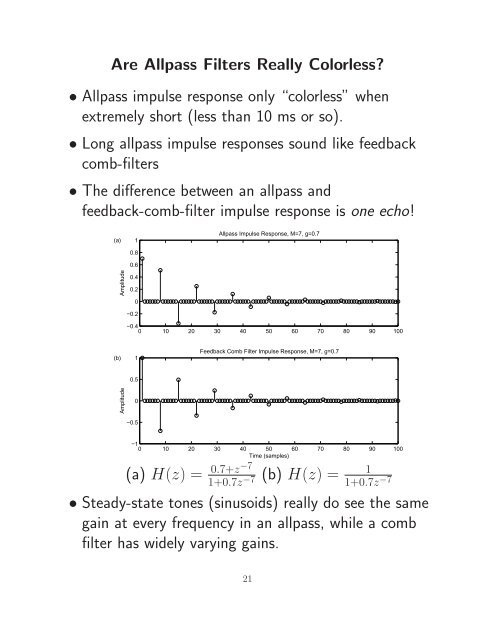Articles - CCRMA - Stanford University
Articles - CCRMA - Stanford University
Articles - CCRMA - Stanford University
You also want an ePaper? Increase the reach of your titles
YUMPU automatically turns print PDFs into web optimized ePapers that Google loves.
Are Allpass Filters Really Colorless?<br />
• Allpass impulse response only “colorless” when<br />
extremely short (less than 10 ms or so).<br />
• Long allpass impulse responses sound like feedback<br />
comb-filters<br />
• The difference between an allpass and<br />
feedback-comb-filter impulse response is one echo!<br />
(a)<br />
Amplitude<br />
(b)<br />
Amplitude<br />
1<br />
0.8<br />
0.6<br />
0.4<br />
0.2<br />
0<br />
−0.2<br />
Allpass Impulse Response, M=7, g=0.7<br />
−0.4<br />
0 10 20 30 40 50 60 70 80 90 100<br />
1<br />
0.5<br />
0<br />
−0.5<br />
Feedback Comb Filter Impulse Response, M=7, g=0.7<br />
−1<br />
0 10 20 30 40 50<br />
Time (samples)<br />
60 70 80 90 100<br />
(a) H(z) = 0.7+z−7<br />
1+0.7z −7 (b) H(z) = 1<br />
1+0.7z −7<br />
• Steady-state tones (sinusoids) really do see the same<br />
gain at every frequency in an allpass, while a comb<br />
filter has widely varying gains.<br />
21
















